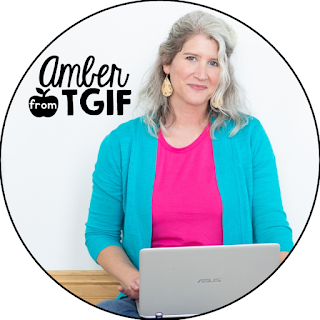This lava lamp lesson is so quick and easy! Bonus points!!!! The students love it and are so engaged with lots of discussion. Solutions, mixtures, suspensions, density, molecules and polarity - oh my! This lesson has it all. Yes, even the teacher will love this lesson.
Materials
any clear plastic bottle with a lid, vegetable oil, water, food coloring, funnel, duct tape and Alka-Seltzer tablet
Directions
1. Fill the bottle 3/4 full with vegetable oil, and fill the rest (almost to the top) with water. (Make this step go faster - you can already have this step done since it has potential to be the messiest.)
- If you would like to, let the students put their caps on tightly and let them shake the two substances. This is a great opportunity for a discussion on suspensions (see below).
- Make sure you give enough time to let the oil and water separate again before adding the food coloring in the next step.
2. Add 3-5 drops of food coloring.
3. Break the Alka-Seltzer tablet in half.
4. Add the half tablet to the bottle and watch in amazement! When the bubbling stops, add the second half.
5. When the bubbling stops again, put the lid on tightly and put a piece of duct tape over the lid and the neck of the bottle to secure it.
Science Discussion Questions
When adding the water to the bottle with the oil:
- Why does the oil float to the top and the water sinks to the bottom? (the oil has a lower density - a teaspoon of oil weighs less than a teaspoon of water)
- Are the water and oil a solution, mixture or suspension? (suspension because they separate over time)
- Have you ever seen a sheen (rainbow colors) in a puddle? That is oil floating on the water. Or have you ever seen an oil tanker spill in the ocean? What happens to the oil? (floats - but can be cleaned up since it is a suspension)

When adding the food coloring:
- What happened when we added the food coloring? (the food coloring slipped through the oil and began to spread out and mix with the water)
- Why did it mix with the water and not the oil? (Food coloring's main ingredient is water. Water molecules are polar and the oil molecules are non-polar. They are attracted to the molecules that are similar, so water molecules "hook-up" with other water molecules. Oil molecules "hook-up" with other oil molecules.)
- What do I mean by "polar?" (Polar means that the water molecules have a negative end and a positive end. The positive and negative ends hook together [+-+-+-] just like magnets do. That is why when we shake the bottle, the oil and water seem to mix up, but they pull back together - just like if you pull two magnets apart, but the snap right back together.)
- Is the water with food coloring a solution, mixture, or suspension? (solution - you cannot separate the water from the food coloring again)
** Magic School Bus Meets Molly Cule is a great book or video to explain molecules. **
When adding the Alka-Seltzer:
- Why is the Alka-Seltzer creating the bubbles? (It is creating a gas - carbon dioxide. As the gas rises, it takes some of the colored water along with it. When it reaches the top, the gas escapes and the water floats back down because it has a lower density.)















No comments